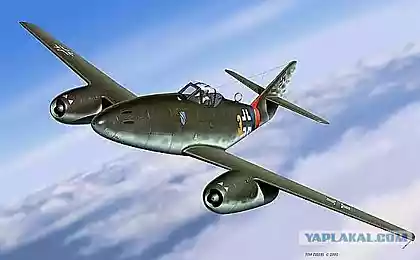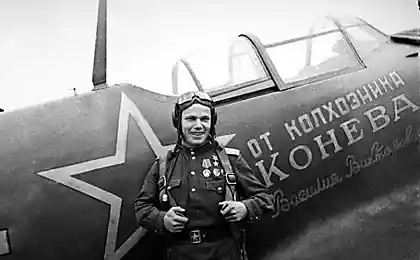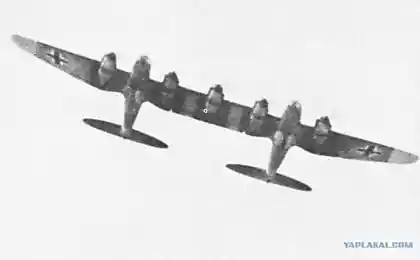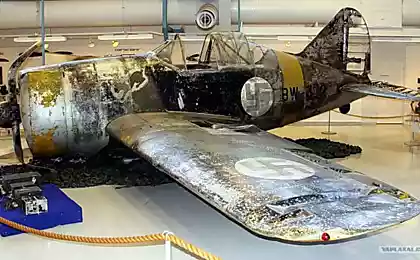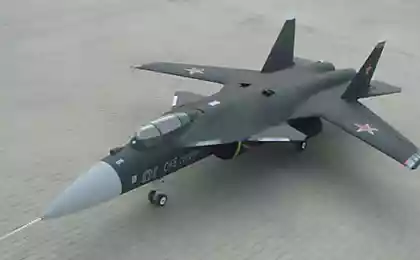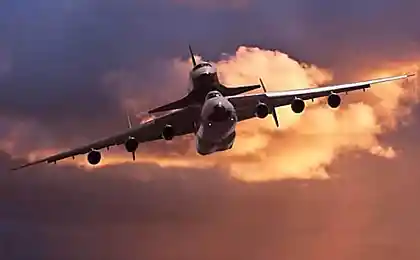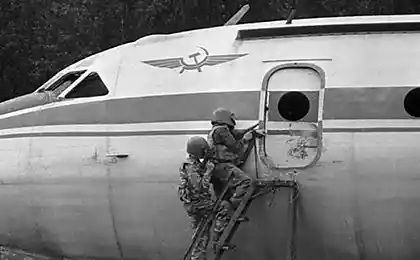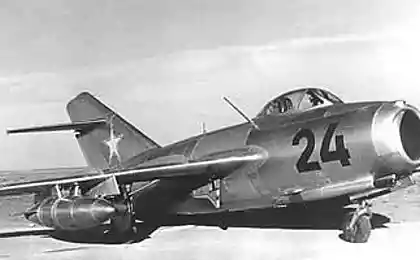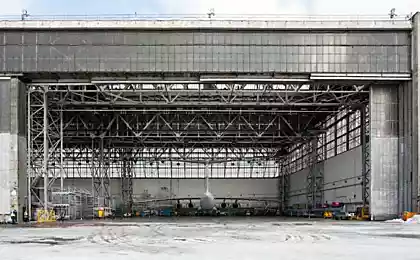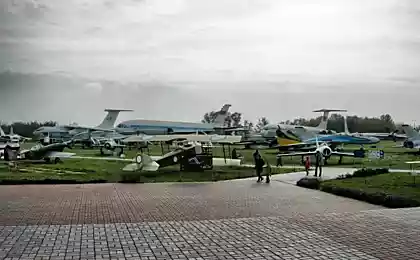893
German aircraft nevedimki (14 photos)
The first turbojet aircraft, rightly ranked among the most unusual combat projects executed during the Second World War.
To implement the project "flying wing" under the auspices of the Luftwaffe was a special "Sonderkommando 9" .RLM assigned machine designation «Go-229", and in the early summer of 1944 a contract was signed by seven experienced and 20 pre-production aircraft.
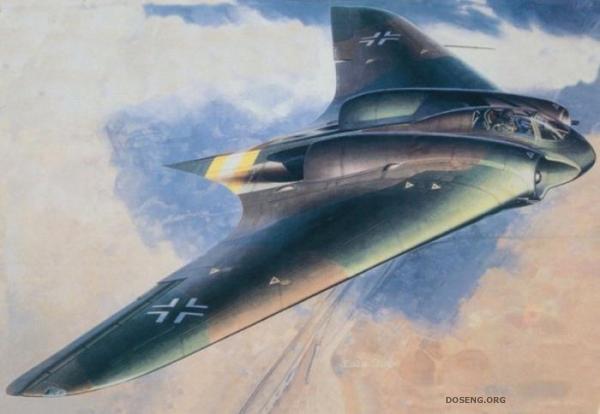
When, in January 1945, began testing the aircraft controllability justified the most optimistic expectations. In March, the nose wheel began to clean up in the air, and then reached the rate of 795 km / h.
The design of this revolutionary for that time, the German development to reduce weight and aerodynamic resistance of the aircraft, while increasing maneuverability. For a futuristic appearance fighter-bomber hiding powerful turbojet engine Junkers Jumo-004V as well as four 30mm cannon. The aircraft can carry two bombs weighing a ton each. This miracle of technology has ideal characteristics: not to end the war in May 1945, Ho-229 would cause a lot of grief allies.
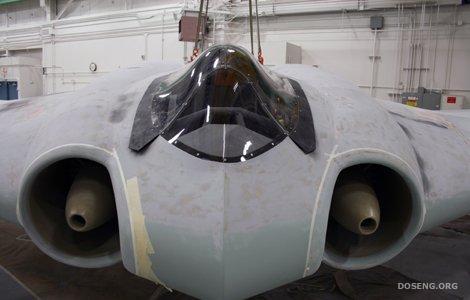
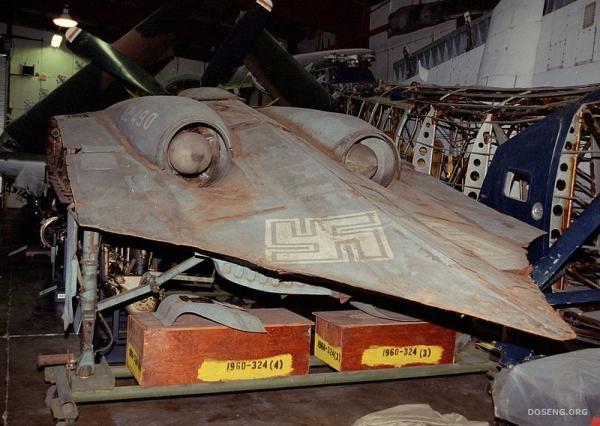
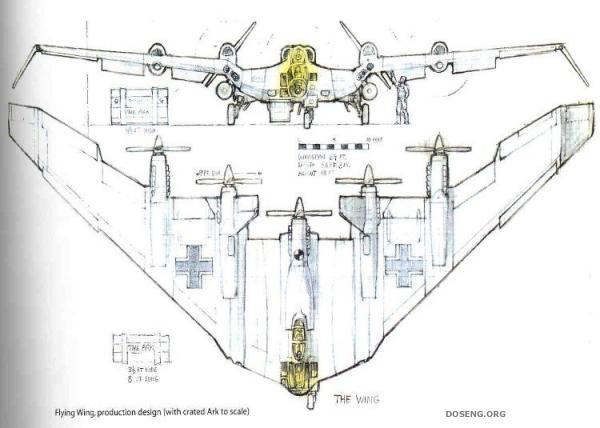
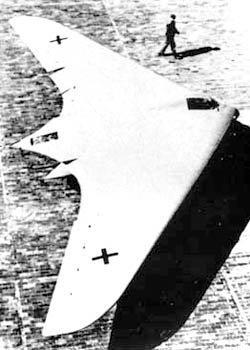
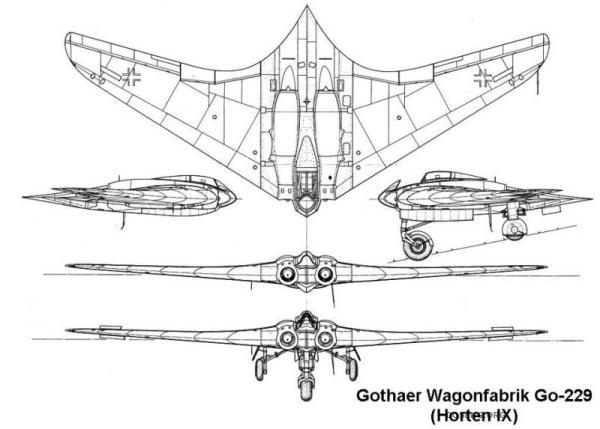
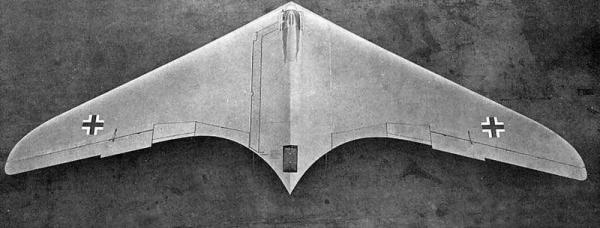
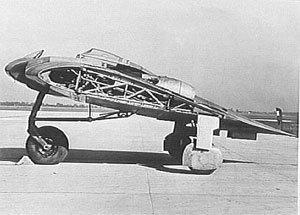
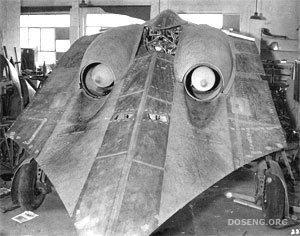
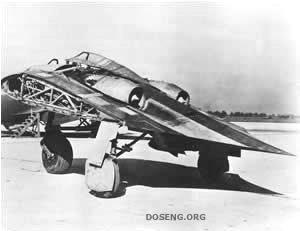
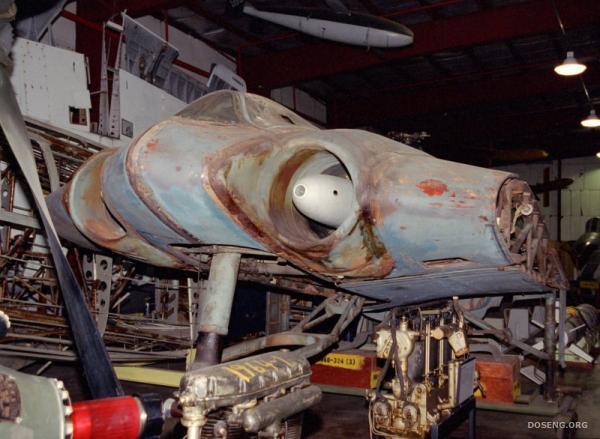


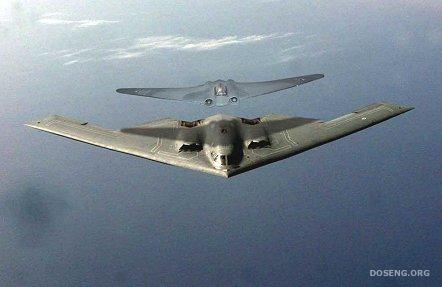
To implement the project "flying wing" under the auspices of the Luftwaffe was a special "Sonderkommando 9" .RLM assigned machine designation «Go-229", and in the early summer of 1944 a contract was signed by seven experienced and 20 pre-production aircraft.

When, in January 1945, began testing the aircraft controllability justified the most optimistic expectations. In March, the nose wheel began to clean up in the air, and then reached the rate of 795 km / h.
The design of this revolutionary for that time, the German development to reduce weight and aerodynamic resistance of the aircraft, while increasing maneuverability. For a futuristic appearance fighter-bomber hiding powerful turbojet engine Junkers Jumo-004V as well as four 30mm cannon. The aircraft can carry two bombs weighing a ton each. This miracle of technology has ideal characteristics: not to end the war in May 1945, Ho-229 would cause a lot of grief allies.


















